Zephyranthes (Zephyranthes) - a bulbous perennial from the Amaryllis family, numbering about four dozen species in its genus. Popularly, due to the very rapid ejection of the peduncle, the flower was called “upstart”. It takes only a day for the peduncle to grow to its full size, after which the flower immediately blooms.
|
Central America is the birthplace of the “upstart” and the plant can safely be called a tropical representative. |
| Content:
|
But there are other names - “rain flower”, “rain lily”. This is what flowering crops are called in the USA because the first inflorescences appear in the natural environment with the arrival of the rainy season.
Description of the plant
The unpretentious rain lily can grow as an indoor flower and feels great outdoors. It has a small height, narrow and long (about thirty centimeters) basal leaves, peduncles of the same length and single inflorescences of white, pink, yellow and red shades with a diameter of eight to ten centimeters.
The root system is presented in the form of a bulb. Crocus-shaped flowers delight with their beauty for one week. Indoors, marshmallows can bloom in any season and in any conditions - in a cool lobby or stairwell, on a heated loggia or veranda.
Brief agricultural technology
- Flowering time – winter, spring, summer, autumn (depending on the type).
- Lighting – you need bright sunlight in large quantities.
- Temperature – in winter – about 10 – 12 degrees (no more), the rest of the time – 20 – 26 degrees Celsius.
- Irrigation regime - rare watering in winter and abundant watering after the top layer of soil dries - in other months.
- Air humidity – on average 50% – 55%, as in a regular residential premises.
- Fertilizer application – throughout the growing season, mineral fertilizers “For flowering indoor crops” are applied at intervals of two weeks.
- Rest period – from December to February or from September to November.
- Transfer – annually at the beginning of active growth, before flowering.
- Soil composition – equal proportions of turf soil, rotted humus and river sand.
- Reproduction methods – seeds and daughter bulbs.
- Pests – the flower is resistant to all pests.
- Diseases – if there is excess moisture in the soil, rot of the bulbs is possible.
Growing conditions and home care rules
Indoor zephyranthes does not require special conditions. Its unpretentiousness allows it to fully develop together with ordinary indoor flowers. Caring for a flower at home does not take much time.
Soil composition
The most suitable substrate consists of humus and deciduous soil (in equal parts) and a small amount of turf soil and coarse sand, but you can use any ready-made soil mixture - light in structure and nutritious in composition.
Lighting requirements
The light-loving flower is very demanding on lighting. The plant needs bright sunlight, which determines the splendor and abundance of flowering. For example, on windows in the northern direction there is not enough light and flowering may not occur; on southern, eastern and western windows, crops grow and bloom well. In summer, it is recommended to place flowers on an open balcony.
Temperature
For the full cultivation of marshmallows, normal room temperature or cooler conditions with average values of 10 to 15 degrees are suitable.
Humidity and watering
Humidity does not have a significant effect on the growth and development of plants, but excess or lack of water during irrigation has negative consequences.It is necessary to find a middle ground so that the soil remains moderately moist, but not wet.
Fertilizer application
Throughout the growing season, crops are fed with special liquid mineral complexes for indoor flowers, taking breaks of two weeks between procedures.
Features of transplantation
Replanting can be done every year or less often, always after flowering has ended. The most favorable period is September – October. The bulbs are planted in low flower containers, three to five pieces in each, deepening them so that the neck remains on the surface of the soil.
Pest Control
Zephyranthes is highly resistant to pests, but with improper care or too dry air, spider mites and scale insects may appear. To combat them, special drugs are used - “Aktellik”, “Decis”, “Karbofos”.
Care during the dormant period
If, with the onset of autumn cold, plants at home stopped growing and dropped their leaves, this means that a period of dormancy has begun for them. At this stage, it is necessary to move the flower pots to a cool room and completely stop watering. If not all the leaves have fallen, then the soil needs to be watered once a month, but in minimal quantities.
Reproduction methods
Seeds
The seed method of propagating zephyranthes is quite labor-intensive and is used only in rare cases. A layer of expanded clay is poured onto the bottom of each pot, and then a substrate of equal parts of humus, peat and sand. Place two or three freshly harvested seeds into each container to a depth of about two centimeters, moisten the soil, cover with glass or polyethylene and leave in a warm room. Seedlings will appear in about four weeks.Caring for young plants involves regular watering and adequate lighting. The first flowering can be expected only in the third year.
Daughter bulbs
This method is fast and more effective. Planting material in the form of baby bulbs is separated from the mother bulb dug out at the end of the season.
|
Bulbs ready for planting |
From one plant you can get ten to fifteen babies. In the period from February 20 to March 15, they are planted in pots, five to seven pieces in each. You can use the same composition as when sowing seeds. The next season you can replant the bulbs in an open flower garden.
Growing in open ground
Place and soil
It’s good if the area for planting zephyranthes is located on a small hill or in an open sunny place, with light shading at noon. Crops are planted in flower beds, ridges and alpine hills.
The soil should be light, loose and fertile, without stagnant moisture. On loams, river sand is added - about ten kilograms per meter of land area. When digging, compost and rotted humus are added to depleted sandstones.
Attention! Fresh manure should not be used to enrich the soil.
Landing dates
The bulbs are planted in well-warmed soil, at a stable air temperature. The optimal time is the second half of May or the beginning of June.
Preparation of planting material
When purchasing planting material, pay special attention to the external characteristics of the bulbs. Healthy material should be dense, with dry scales, without rot or other signs of disease. Before planting, the bulbs are soaked for thirty minutes in a disinfecting and stimulating solution.If earlier flowering is required, then the planting material is germinated in a regular flower pot for two to three weeks.
Planting and care
Zephyranthes is planted in open ground in specially prepared holes at a distance of five centimeters from each other. One or three bulbs are placed in one hole, sprinkled with soil, and watered abundantly.
Caring for zephyranthes involves timely watering and feeding. Irrigation water should be warm and settled; it should be applied strictly at the root, in moderate volumes. The soil should not dry out; it is better to maintain light moisture. Before flowering, plants need to be fed with potassium and phosphorus. You can use complex mineral fertilizers.
In order not to miss the appearance of pests, it is necessary to constantly inspect flower plantings and take timely measures.
At the beginning of autumn, the bulbs are dug up along with the above-ground part, the dried tops are cut off after a while, and the bulbs are stored in boxes with sawdust or planted in flower pots.
Zephyranthes varieties with photos
"White" or "Snow White" (Zephyranthes candida)
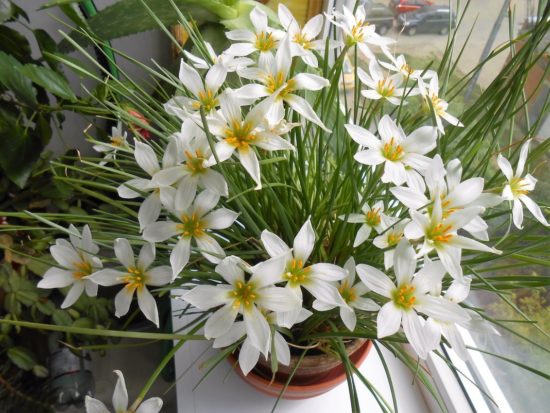
“Snow White” (Zephyranthes candida) Suitable for open ground and indoor growing. |
The flowering period lasts from July to September. The culture consists of long decorative leaves (about thirty centimeters) and white crocus-like inflorescences up to six centimeters in diameter with pointed petals.
"Yellow" or "Golden" (Zephyranthes aurea)
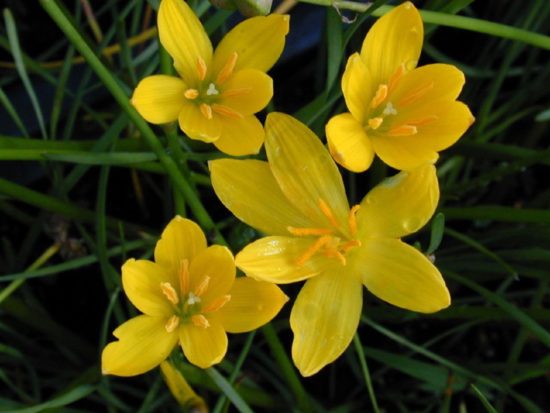
"Golden" (Zephyranthes aurea) |
This marshmallow variety is recommended for home cultivation, as its flowering period occurs in the winter months - from December to January. It has yellow flowers.
"Pink" (Zephyranthes rosea)

'Rose' (Zephyranthes rosea) Can be grown in hanging containers. |
The variety is distinguished by shiny dark green leaves, short peduncles and bright pink flowers, which bloom from the second half of May until the beginning of autumn.
"Lemon" (Zephyranthes sulphurea)
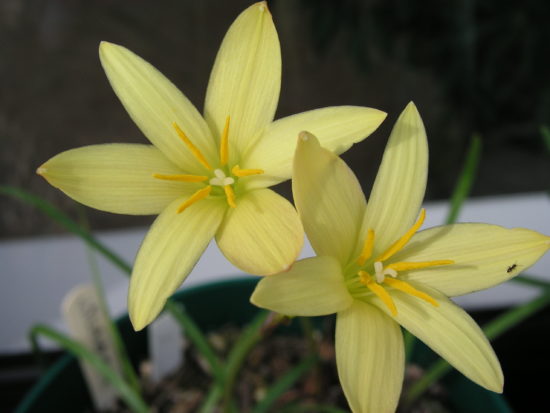
"Lemon" (Zephyranthes sulphurea) |
It blooms in mid-winter, the length of the basal leaves is about twenty-five centimeters, the inflorescences are lemon-yellow.
"Atamas" (Zephyranthes atamasca)
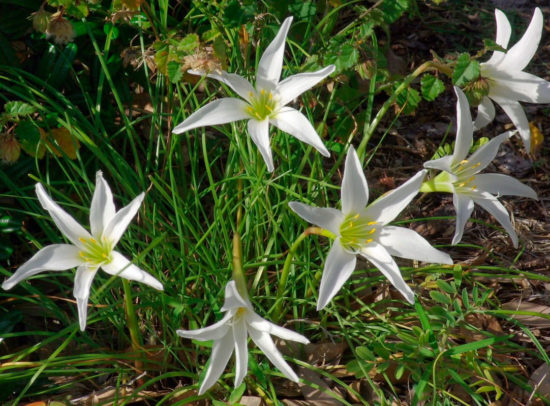
"Atamasca" (Zephyranthes atamasca) Can grow in cool conditions. |
Blooms in April – June. Each plant consists of five to six basal leaves, tubular peduncles about twenty-five centimeters high and snow-white flowers about four centimeters in diameter.
"Powerful Robustus" (Zephyranthes robusta)
|
"Powerful Robustus" (Zephyranthes robusta) Easily propagated by seeds. |
Small in size, pastel pink in color, with a subtle, subtle aroma, the flowers decorate a personal plot or room throughout the summer season. The variety is distinguished by elongated pointed petals - about seven centimeters in length.
"Large-flowered" (Zephyranthes grandiflora)
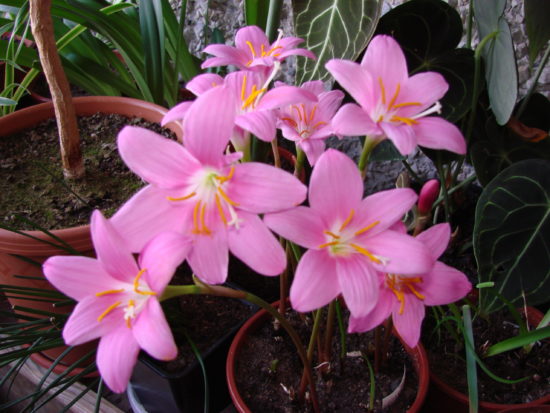
"Large-flowered" (Zephyranthes grandiflora) |
An early flowering variety of zephyranthes, suitable for regions with temperate climates. Red-pink flowers up to eight centimeters in diameter appear between April and July. The rest period is from September to November.
"Multi-colored" (Zephyranthes versicolor)
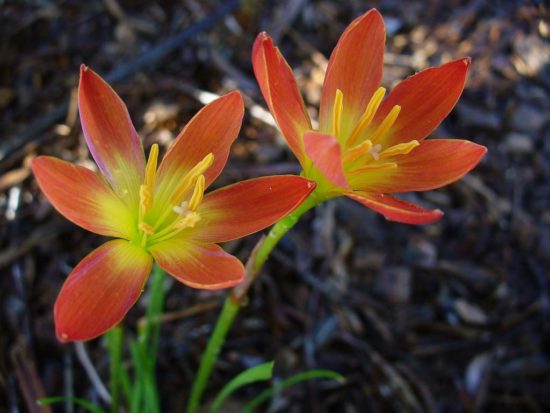
"Multi-colored" (Zephyranthes versicolor) |
A variety with a winter flowering period. The peculiarity of the plant is the formation of leaves after the appearance of inflorescences.
"Anderson" (Zephyranthes andersonii)
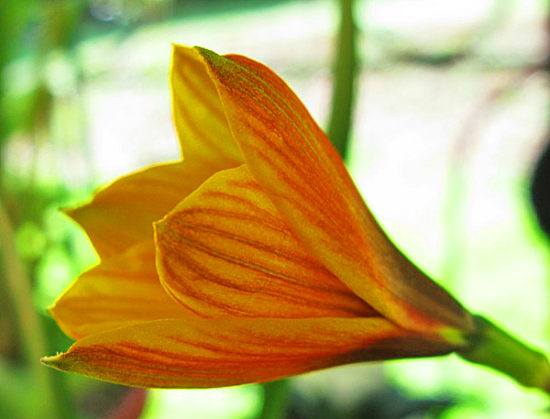
"Anderson" (Zephyranthes andersonii) |
The most unusual variety of flowers is the variety of zephyranthes, one side of the petal of which is yellow-orange in color, and the other is dark purple. Blooms throughout the summer.
Just a little attention and care - and a tropical flower will become a real decoration of your home or garden.
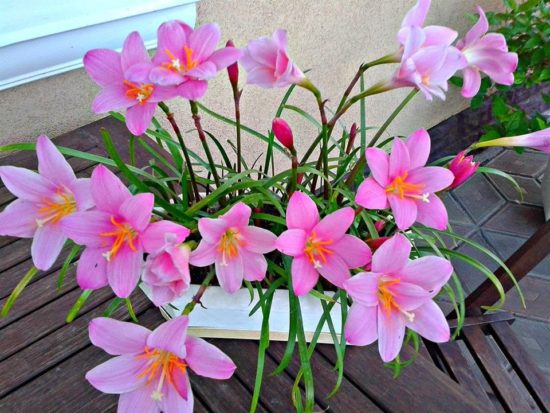
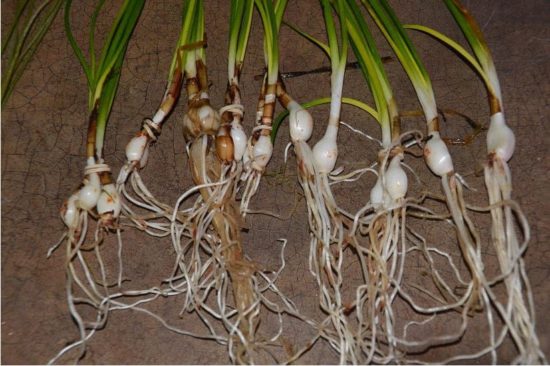
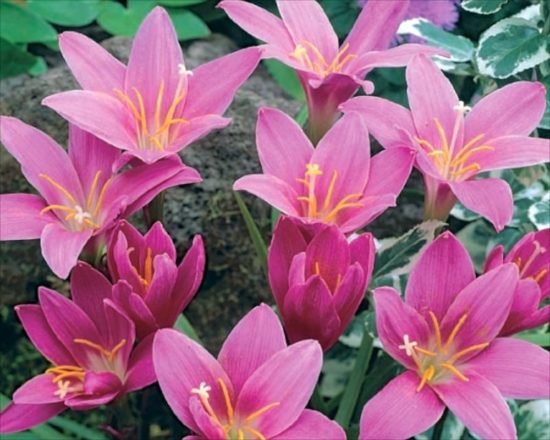

 CUCUMBERS NEVER GET SICK, I'VE BEEN USING ONLY THIS FOR 40 YEARS! I SHARE A SECRET WITH YOU, CUCUMBERS ARE LIKE THE PICTURE!
CUCUMBERS NEVER GET SICK, I'VE BEEN USING ONLY THIS FOR 40 YEARS! I SHARE A SECRET WITH YOU, CUCUMBERS ARE LIKE THE PICTURE! You can dig a bucket of potatoes from each bush. Do you think these are fairy tales? Watch the video
You can dig a bucket of potatoes from each bush. Do you think these are fairy tales? Watch the video
 How our fellow gardeners work in Korea. There is a lot to learn and just fun to watch.
How our fellow gardeners work in Korea. There is a lot to learn and just fun to watch. Eye trainer. The author claims that with daily viewing, vision is restored. They don't charge money for views.
Eye trainer. The author claims that with daily viewing, vision is restored. They don't charge money for views. A 3-ingredient cake recipe in 30 minutes is better than Napoleon. Simple and very tasty.
A 3-ingredient cake recipe in 30 minutes is better than Napoleon. Simple and very tasty. Therapeutic exercises for cervical osteochondrosis. A complete set of exercises.
Therapeutic exercises for cervical osteochondrosis. A complete set of exercises. Which indoor plants match your zodiac sign?
Which indoor plants match your zodiac sign? What about them? Excursion to German dachas.
What about them? Excursion to German dachas.